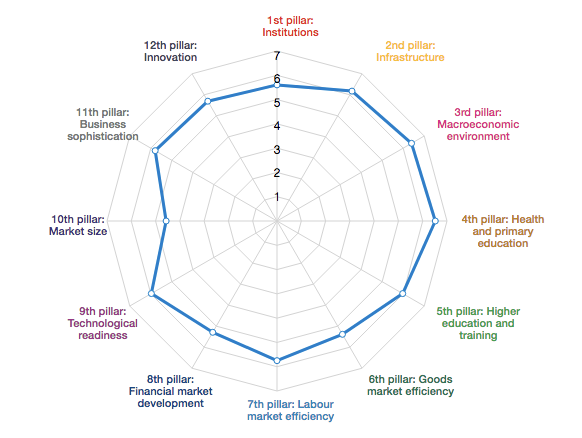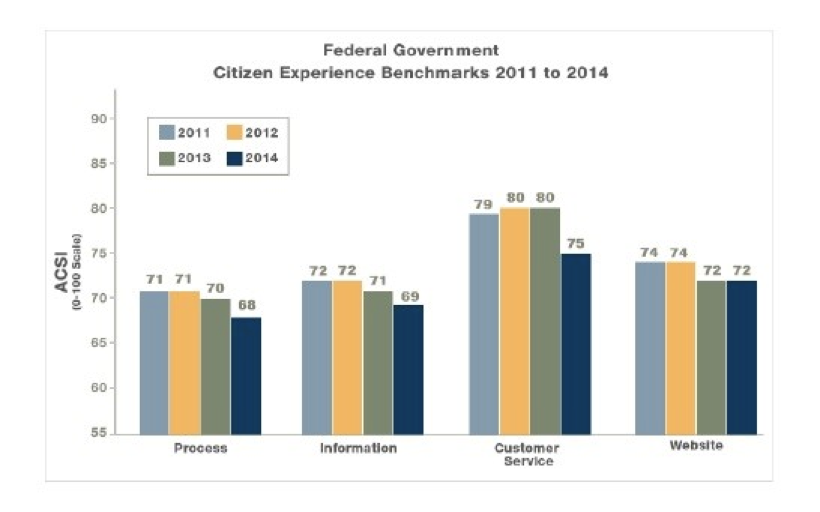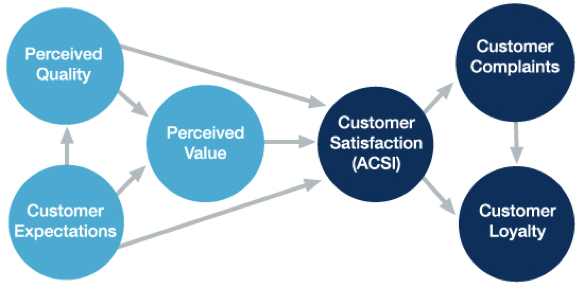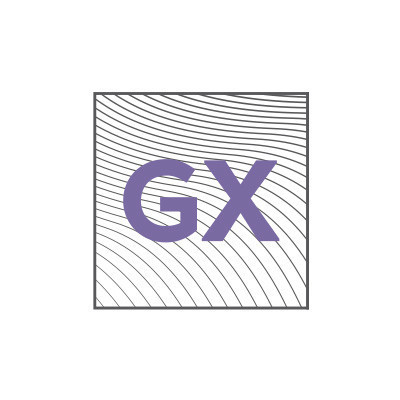What a Government Services Global Index Could Look Like
A Government Services Global Index can offer a guiding roadmap to improving customer satisfaction, lowering costs, and increasing citizen participation and trust in government.
Currently, if we wanted to list the top 10 countries excelling in government services, it would be challenging to confidently do so without empirical evidence. The same applies for gauging customer satisfaction globally from citizens and residents.
One of the most effective ways to improve government services around the world would be to start with creating a measurement index.
The perception is that governments are poor service providers
Many citizens and residents perceive their government as poor service providers - slow, bureaucratic, and rarely innovative. Millions of customers depend on government agencies for vital services but delays in processing requests often cause understandable frustration and hardship.
Even if government employees want to increase customer satisfaction, they can find themselves in constrained operating environments subject to policies, laws, regulations, and business rules. They don’t feel adequately empowered to meet the ever-growing customer expectations that customers experience by great private sector experiences - experiences that are personalized, fast, easy, and readily accessible.
An index can offer a guiding roadmap to improve customer satisfaction, lower costs, and also increase citizen participation and trust in government
Having higher customer satisfaction in government services not only increases satisfaction but increases participation and trust in government as well. For example, citizens in the U.S. who were highly satisfied with a federal government website gave 64% higher trust scores to the government agency and they reported being 48% more likely to take part in government by expressing their thoughts to the government unit than citizens who were less satisfied.
A Government Services index could offer a comprehensive solution and help governments who want to excel in this field by giving them a roadmap to success. The index would combine complex factors for each country and package that information in a ranking. It would help governments understand more clearly how they could improve their services and in which areas they should invest or more resources or divert existing resources.
Indicators to measure
Inspired by the World Economic Forum’s Global Competitiveness Index model as well as the Balanced Scorecard, the Government Services Index could include three main measurement sections: basic requirements, efficiency enhancers, and innovation and sophistication.
- Basic requirements:
This would include customer satisfaction. What do citizens and residents think about their experiences when applying for a birth certificate, opening a business, registering a new car, renewing their visa status, taking the metro, paying utility bills, or receiving a green energy tax credit? How do they score their government services in their country? How do they score their experience using a government website or app, and do they return or recommend it?
- Internal efficiency enhancers:
This refers to internal processes. It could include indicators for how much time a service took to complete, what bureaucratic red tape a customer had to go through, and how stress-free the customer’s experience was. To what extent has the workforce been trained, what digital skills and customer service do they have, and how efficient are employees and processes? How well do processes, regulations, and operating environments reduce or increase customer frustration? How much discretionary power do managers and employees have to meet or exceed customer needs? Does the government agency leverage automation for mundane tasks to free up time for employees to focus on more complex customer service tasks? Are there enough employees dedicated to customer service despite government budget cuts?
- Innovation and sophistication:
This section could include indicators for leveraging technological advancements, automation, next-level insights from big data, digital experiences, and also collaborating with private sector experts to pioneer new aspects of government service delivery. What is the innovative and entrepreneurial culture of the government agency? Do they have a government-funded design center, like Portugal’s Citizen Shop, Denmark’s National Design Center, UK Government Digital Service, South Korea’s Civic Participatory Design Team, or Singapore’s Government Technology Agency? To what extent are government bodies and companies embracing disruptive ideas? To what extent are they collaborating with each other? How does a customer’s experience compare to that of the private sector?
Once the three sections are filled with major indicators, or “pillars”, we could construct a Government Services Profile for each country using a spider diagram like that shown in the Global Competitive Index.

Source: World Economic Forum’s Global Competitiveness Index
Measuring customer satisfaction: a U.S. case study
A vital aspect of this index is taking a deep dive into customer satisfaction. How do you measure customer satisfaction? What drives customer satisfaction? This can become quite complex.
We do know that highly satisfied customers are more likely to use the platform again as their primary resource (e.g., a well-thought out website), recommend that service to family and friends, and take part in expressing their thoughts with that government unit. Trust in government is more likely to be increased also. However, it can become more complex because customer service and employee satisfaction are interrelated as well. When employees are happy with their jobs, customer service tends to be more positive as a reflection.
If we use the U.S. as a case study, we can consider four methods that can work together:
Method 1: Four major pillars
We can break customer satisfaction down into four major pillars: process, information, customer service, and website or online component.

Source: MITRE’s Center for Connected Government
Method 2: Nine service quality dimensions
Similarly, the U.S. Office of Personnel Management deploys a customer satisfaction survey that uses nine service quality dimensions to predict customer satisfaction for both internal and external customers:
- Access
- Courtesy
- Knowledge
- Timeliness
- Reliability
- Choice
- Tangibles
- Recovery
- Quality
Method 3: A national index collecting customer satisfaction interviews from all industries
Another organization, the American Customer Satisfaction Index (ACSI), uses customer interviews from a random sampling of recent customers to rank customer satisfaction in many economic industries. It lists drivers of satisfaction on the left side (customer expectations, perceived quality, and perceived value), satisfaction (ACSI) in the center, and outcomes of satisfaction on the right side (customer complaints and customer loyalty, including customer retention and price tolerance).

Source: American Customer Satisfaction Index (ACSI)
Once customer satisfaction is measured in each sector and industry, the ACSI issues a national customer satisfaction ranking. A similar process could be customized for government services across all government agencies with an output of a national customer satisfaction ranking.
The ACSI has already applied its index to an E-Government Satisfaction Index in the USA, which analyzes citizen satisfaction with e-government, or online experiences. They found that satisfaction with e-government was much higher than satisfaction with the overall federal government and that several government websites rivaled similar satisfaction with private sector sites. Those that have lower scores tend to be agencies that require higher-level requirements or regulatory compliance.
Method 4: Studying successful companies in the private sector
Taking inspiration from customer satisfaction best practices in the private sector is key for increasing customer satisfaction and leaping ahead of other countries.
Former U.S. President Barack Obama once stated upon releasing an executive order to streamline service delivery and improve customer service, “Government managers must learn from what is working in the private sector and apply these best practices to deliver services better, faster, and at lower cost.”
Ken Mullins with the MITRE's Center for Connected Government visited both Procter and Gamble (P&G) and the world-renown Cleveland Clinic in the USA and noticed a few clear and distinct proven customer satisfaction practices.
At P&G, the slogan, “The Customer is the Boss!” is the driving force behind a company of over 130,000 employees focused on customer wants and needs into brands that excite, delight, and deliver.
At the Cleveland Clinic, it was clear that employees believe they work for one of the most innovative, forward-looking medical institutions in the USA. They find ways to lower costs for patients, believe that collaborative medicine is more effective, leverage big data to improve quality and lower cost, believe empathy is the secret to achieving better patient outcomes, and believe that cooperative practices can lead to greater innovation - even including customers in the design.
Key take-aways
Governments can take away four best practices, and this should be reflected in the Government Services Global index:
- Listen to your customer: Elicit frequent quantitative and qualitative feedback, for example through short and frequent surveys, as well as listening on social media.
- Empower customer-facing employees: They should have broad-based knowledge so they can address issues no matter where they live in the enterprise.
- Streamline operational processes: Integrate data across departments and siloes with a single customer record, workflow automation, and automated self-services. One of the most frustrating customer experiences is dealing with one part of an agency that doesn’t know what another part of the agency is doing (or has done) to resolve an issue for a customer.
- Leverage big data and technology: Use technological advancements, automation, insights from big data, digital experiences to solve customer frustrations. Better data drives better design, and better design drives citizen satisfaction.
- Cocreate - invite the public’s input to improve services: For example, Portugal’s participatory budget lets citizens present their investment ideas and vote on which projects to fund and implement. Citizens submit proposals via the website or in participatory meetings and then vote on the regional and national projects they would like to see implemented.
- Improve performance management: continue to measure customer experience with KPIs, objectives, scorecards, and dashboards.
Measuring the performance of government service delivery around the world is vital to improving and taking inspiration from private sector best practices is key. An index can offer a guiding roadmap to improve customer satisfaction, lower costs, and also increase citizen participation and trust in government.
Related Stories
No records found





